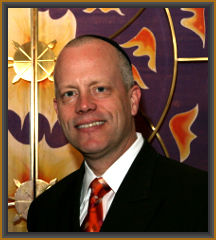
 |
June 9, 2023 (20 Sivan 5783) Parashat Beha’a’lot’cha
Dear Friends, I hope this correspondence finds you well and in good health. Please join us in Shul this Saturday morning for Shabbat services, which begin at 10:15am. The service will also be available on our regular Zoom prayer link. This Monday night at 8:00pm, we will continue our Adult Education series entitled Exclusion & Inclusion. Our featured speaker will be Rafi Josselson, who is a tenth-grade autistic student at the Leffell School in Hartsdale, NY. Rafi speaks around the country about neurodiversity and autism and he will share with us his original theory that Yosef (of the Bible) was, in fact, neurodiverse and autistic. Please join us to meet our fascinating guest and learn some unique Torah! As many of you are aware, June is Pride Month and many people have asked me to offer a brief perspective of Jewish teachings on the subject. The most frequently quoted biblical text referencing homosexuality is found in Leviticus 20:13, which reads, “If a man lies with a male as one lies with a woman, the two of them have done an abhorrent thing; they shall be put to death—and they retain the bloodguilt.” While clearly challenging, two points need to be kept in mind. First, in context of the Priestly codes of Leviticus, the biblical authors were dictating a long list of sexual relationships that were either inherently abusive or connected with foreign cultic practices. The writers were assuredly not familiar with, in any way shape or form, monogamous and loving same-sex relationships, which we encounter in contemporary gay society. Second, there are numerous prohibitions in the Torah whereby we no longer consider the law applicable, or God forbid, worthy of capital punishment (including the laws of the defiant son [Dev. 18] and the laws of gathering wood on Shabbat [Ex.35]). Simply put, centuries ago, cultures were not familiar with the possibility of men leading a monogamous and loving same-sex relationship, in which the possibility existed of building together a Bayit Neeman B’Yisrael (a faithful family-centered home of the Jewish faith). The Torah is an androcentric text and does not directly address lesbianism. Furthermore, as a male-centered text, the cultural assumption was that women were exclusively the object and not the protagonists of sexual activity. Sexual intimacy between women was not mentioned at all in Jewish texts until Talmudic times. The act of Mesolelut, or women laying together, is originally deemed inappropriate in Tractate Shabbat and Yevamoth because it rendered the female unfit for marrying a Kohen. Rambam notes in his code, the Mishneh Torah (Hilchot Issurei Bi’ah 21:8), “For women to play around with one another is forbidden and belongs to ‘the practices of the Egyptians’ concerning which we have been warned… You shall not copy the practices of the land of Egypt.” Today, we do not worry about a lesbian couple marrying a “temple-active” Kohen or engaging in erotic behaviors in deference to Egyptian sexuality. Again, centuries ago, cultures were not familiar with the possibility of women pursuing a monogamous and loving same-sex relationship in which the possibility existed of building together a Bayit Neeman B’Yisrael. Regarding non-binary identifying, and transgender individuals, the Mishna (in Tractates Bikkurim and Zevachim) introduces two terms of note, the Androgenous and the Tumtum. Although, beyond the scope of this article, it is relevant to note that even in ancient times these were references to folks, who for biological or (arguably) psychological reasons could not be classified into a specific category of male or female. Although Jewish Sages often had a predilection to sort the world into binaries, they also acknowledged that not all parts of God’s creation can be contained in orderly boxes. Pages of the Talmud are dedicated to understanding and respecting these specific individuals, while safeguarding and upholding the sanctity of each human being, as an ultimate Torah true value. Folks, we live in a complicated and changing world. Today, as I respectfully understand it, the all-inclusive group phrase for the PRIDE community is LGBTQIA2S+ (lesbian, gay, bisexual, transgender, queer and/or questioning, intersex, asexual, two-spirit) and the countless affirmative ways in which people choose to self-identify. Undoubtedly, there are Jews, our fellow human beings, brothers, and sisters, who identify in each of the above listed groupings. As we learn more about the unique human experience of others, Jewish tradition implores us to understand that all are created in the image of God (Gen. 1:27). The image of God (imitatio dei) refers to the immaterial part of humanity and enables us to commune with our Maker. It is a likeness not physical, but rather mental, moral, social, and religious. Mentally, humanity was created as a rational, volitional agent. Anytime someone invents a machine, writes a book, paints a landscape, enjoys a symphony, calculates a sum, or names a pet, he or she is proclaiming the fact that they are made in God’s image. Morally, humanity was created in righteousness and perfect innocence, a reflection of God’s holiness. Anytime we rely on our conscience or “moral compass” to do justice and bring healing, that is a vestige of HaShem’s original direction to us. And finally, socially, humanity was created for fellowship. Every time someone marries, makes a friend, hugs a child, or reaches out to the other, he or she is demonstrating the fact that they are indeed made in the likeness of God. As Shabbat approaches, I invite you to share your thoughts and experiences, as you feel comfortable. We wish health, happiness, and faithfulness to all. Let us use this sacred time to challenge ourselves to recognize the Godliness in others, respect differences, honor tradition, and embrace the idea of V’Ahavta L’Reiacha Kamocha, always loving our neighbors as ourselves. Shabbat Shalom, Rabbi Eric L. Wasser, EdD, Hon.DM
|